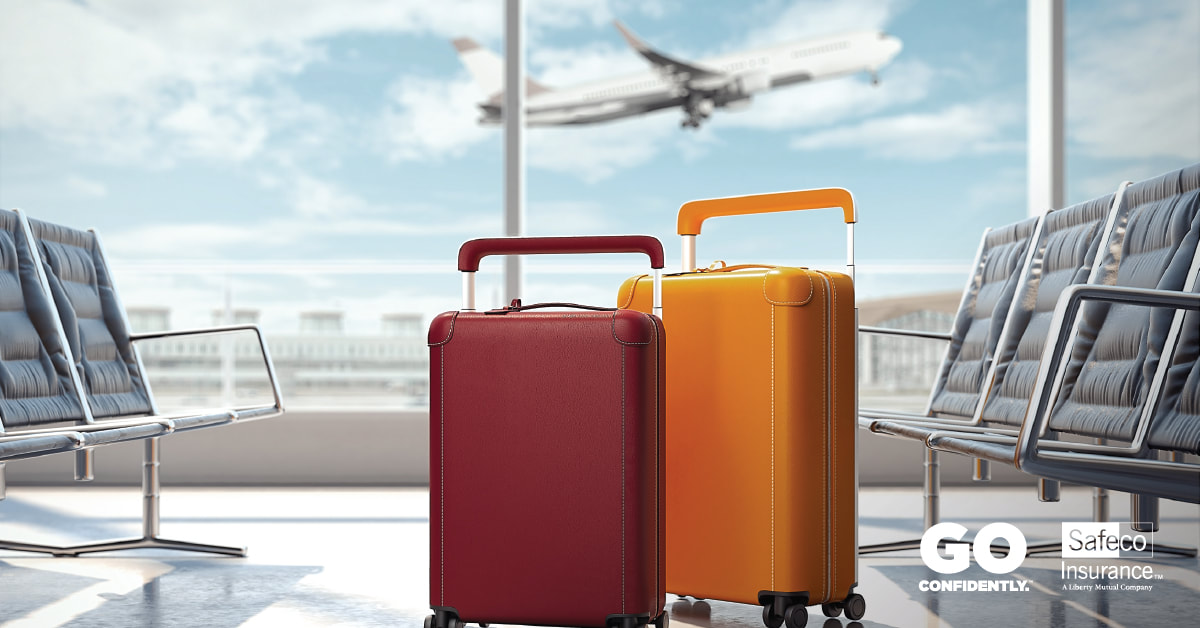 Sometimes, a basic homeowners policy just isn’t enough. So as your career advances and your income increases, it’s important to keep your insurance protection up to date. This helps you avoid expensive gaps in coverage and prevents you from paying too much out of pocket in case of a claim. To be properly protected, you need a homeowners policy that grows with you. That’s why we offer multiple homeowners policy options, including our HE-7 package, specifically for customers who need higher levels of protection. You may benefit from additional coverage if any of the following apply to you:
Extended dwelling coverage. Full reconstruction costs are often different than market value, so your current homeowners policy may not accurately reflect the true costs of rebuilding your home. Extended dwelling coverage helps you rebuild if construction or permitting costs change and add up to more than your current policy limits. It may also pay for debris removal, contractor costs, construction fees and permits, architect's fees, and other expenses. Building ordinance or law coverage. If your home needs to be rebuilt or repaired due to a covered loss, you’ll have to build according to current building codes. And since codes change, this could mean higher costs than expected to rebuild. Building ordinance policy, or law coverage, exists for just such scenarios — and it could save you thousands. Replacement cost up-front coverage. This loss settlement option allows you to choose not to rebuild at the original location following a covered total loss. In this case, you’ll get a payout to apply to the purchase or construction of a new home in a new location. Personal property replacement cost coverage. This helps cover the costs of replacing personal property, such as electronics, art, jewelry, and furniture, with no deduction for depreciation. So you’ll get the amount needed to buy an identical or comparable item rather than settling for something of lesser value. Personal offense coverage. This offers you broad protection against a variety of lawsuits and damages related to libel, slander, defamation of character, invasion of privacy, and other offenses. This may include comments made on social media by either you or your children.
0 Comments
 If you have a homeowners policy, you probably expect it to cover all the costs of rebuilding your house in case it’s damaged or destroyed by a covered hazard. But are you certain you have enough coverage? Read about two common situations you may be unaware of — and the affordable options that can help put your mind at ease. Extended dwelling coverage Since reconstruction costs are different from market value, your current homeowners policy may not accurately reflect the true costs of rebuilding your home. Extended dwelling coverage helps you rebuild if construction costs change and add up to more than your current policy limits. To illustrate this concept, consider this real-life scenario. Your home is currently insured for 100% of its replacement cost, with the cost based on the value of your house when the policy was originally written. However, a wildfire sweeps through your area destroying your home along with hundreds of others nearby. Due to the high demand caused by the natural disaster, construction materials and labor costs increase 20% in your area. So your $200,000 home will now cost $240,000 to rebuild. If you had 20% extended dwelling coverage, you’d get the $240,000. Without it, you get $200,000 and will have to make up the difference out of pocket or settle for less house than you originally had. Building ordinance or law coverage If your home is damaged by a covered loss and needs to be rebuilt or repaired, you are required to build according to current building codes. And since codes have grown more rigorous over the past 20 years, this could mean much higher costs to rebuild than you anticipate. That’s where a building ordinance policy, or law coverage, comes into effect — and it could save you thousands of dollars. Again, let’s take the example from above and assume you have a $200,000 homeowners policy. With a 10% building ordinance policy, you would get an extra $20,000 to apply to the new building code requirements you must meet. Without this policy option, you’ll have to pay the difference to bring your house up to code. Extended dwelling and building ordinance policies offer valuable protection from gaps in coverage in case of an unforeseen covered event, and all for an affordable annual premium.  It’s back-to-school time — is your house ready? We’re not quite sure where summer went, but if you haven’t noticed, it’s already time to think about the new school year. And as you think about how to get your kids organized and ready, consider doing the same thing for something else — your home. It won’t just be good for you; in many instances, removing clutter also means removing distractions, which can help your kids focus better. Where to start You can start wherever you like, but it might be best to make sure your activities are organized before you start in on the daunting task of tackling all of your stuff. With sports and other activities, the school year can be a blur for parents. So keeping a family calendar — whether it’s a dry-erase board or just a weekly printout on the fridge — will ensure that everyone knows where they’re going, and when. Before the kids go back Don’t head out for back-to-school shopping just yet. First, do an inventory of school supplies, clothes and shoes so you aren’t buying things you don’t need. Toss or donate stuff that’s old, that doesn’t fit, or that your kids simply don’t like and won’t wear any more. One trick we’ve seen online: If you’re going through a whole closet and you’re not sure what fits your kids, have them try on pants until you find a good pair. Then use that pair to compare the length of all of the other pants. When they’ve got homework If possible, designate a study space where your kids have the tools they need for success. It should be well-lit, quiet and free of distractions. Different kids have different learning styles, so you’ll soon find out what works well and what doesn’t. Now that you’ve gotten them organized ... ... It’s time to focus some energy on your stuff. Eliminate as much clutter from the house as you can, perhaps by following the classic 80/20 theory: 80% of the time, most people use only 20% of their stuff. If the item you’re looking at isn’t in that 20%, ask yourself: Do I really need this? Stay on top of things You’re off to a good start in the organizing battle — so keep things rolling! Each week, set aside time to go on a “search and destroy” mission for clutter. It’s much easier to stay organized when you only have to do a little at a time. And make sure the kids are involved, too. Everything — homework, school forms, backpacks — should have a home. And when everything has a home, you’ll be happier in yours!  Summer is here, which means it’s time to think about family vacations! (If you haven’t been thinking about them all year, that is.) The family part of family vacations, however, can make things a little complicated. You want to choose a destination that is fun for everyone, including the kids. You want to ensure they’re safe on the trip, wherever you go. And you probably want to figure out how to make traveling with them easier, too. We’ve got you covered with some great tips, so you can relax when you hit the road—or at least after you get to where you’re going. Instead of thinking about where to go, first think about what you want to do. Experts interviewed by the New York Times recommend starting with figuring out what you want to do on your vacation, because that will help you narrow your list of possible destinations. Want a laid-back trip with lazy days, but one that will still keep kids of all ages engaged? Maybe a beach trip is best. Looking for a few thrills? Theme parks are great for kids ages 3-12 (younger kids might not be able to go on many of the rides, and older kids might not be as enthusiastic). Think it would be best to give everyone a chance to do their own thing? Cruises have lots of family-friendly options, along with chances for kids to be more independent. To help the kids feel good about where they’re headed, you can let them choose some of the activities for certain days, or actively involve them in designing the entire itinerary. Think about how you’ll get there, too. Traveling with kids—especially young ones—can be a challenge. For trips longer than a couple of hours, one old trick is to wrap up inexpensive toys or treats for children and use them as a reward for good behavior. For every hour they’re good, they get to open a present. Not only will that help keep them in line, it will keep them occupied for the hour in between. Some vacations require a flight, of course, but car trips and train travel can be great options for families. In the car, you’ve got flexibility and control—you can meander and explore along the way, break the trip up however you like, and pull over whenever you want for rest or a fun activity. You don’t have as much control on a train, but there’s plenty of space to move around, and kids often find it fun to watch the world go by outside. Keep safety in mind. When you’re away from home, no matter what kind of vacation you’ve planned, make sure your kids know what to do if you get separated or there’s an emergency. Safewise.com recommends that families practice these situations—and create “information cards” for kids to carry that include phone numbers, where you’re staying, etc. Having your children wear bright, recognizable clothing, or even using GPS devices to keep track of them, are good ideas as well. Another useful trick many parents use is taking a photo of each child every morning before embarking on the day’s adventures. Then, if someone gets lost, you have a current photo to share so people know exactly what to look for. Don’t try to do too much. As one travel-company professional and mother of three told the New York Times, make sure to build some downtime into your itinerary—she recommends limiting planned activities to a half-day or less. The rest of the day can still be fun, but give yourself a break with some time at the pool or a local park. There’s no way to guarantee a great vacation, obviously. But with a little planning and consideration, you and your family will be well on your way. Safe travels this summer!  Spring is here, which means you'll likely see more motorcycles on the road. And the key word here is "see." People driving cars and trucks often fail to notice the motorcyclists around them, partly because they're not accustomed to looking for them. It's obvious yet bears repeating: Motorcyclists are much more vulnerable than car and truck drivers and passengers. Not only are there many more cars and trucks on the road, but there's no such thing as a "fender bender" for a motorcyclist. Even a low-speed collision can seriously injure a rider, not to mention total the bike, so it's important to always give motorcycles extra space and an extra look. Below are six tips to help you safely share the road with motorcyclists. Objects in mirror. The object in your mirror may be closer than it appears — especially if it's a motorcycle. Due to its size, it can be harder to determine how close a motorcycle is and how fast it's moving. When turning into traffic, always estimate a bike to be closer than it appears to avoid forcing a rider to quickly hit the brakes — or worse. Watch those left turns. One of the most common motorcycle accidents involves a car making a left turn directly in front of a bike at an intersection. Give yourself an extra moment to look specifically for motorcycles coming toward you when turning into traffic. Double-check your blind spot. Carefully checking your blind spot before changing lanes is always a good idea. When it comes to motorcycles, it's critical. A bike can be easily obscured in the blind spot, hidden behind your car’s roof pillars, or blend in with cars in other lanes, so make a habit of checking carefully before changing lanes. Plus, always use your turn signal. Don’t tailgate. This is another general rule for all drivers, but it's especially important when following a motorcycle. Be aware that many riders decrease speed by downshifting or easing off the throttle, so you won't see any brake lights even though they are slowing down. Following at least three seconds behind the bike should give you enough time and space to safely slow down or stop when necessary. Stay in your lane. Obviously, motorcycles don't take up an entire lane the way cars or trucks do. But that doesn't mean you can cozy up and share a lane with a bike. Just because the rider may be hugging one side of the lane doesn't mean you can move into that space. Riders are likely doing this to avoid debris, oil on the road, or a pothole, so a bit of mild swerving within the lane can be expected. Do not crowd into the lane with a bike. Think about motorcycles. Making a habit of always checking for bikes when you drive will make the above tips second nature, and make you a better driver. To personalize it, think about your friends and family members who ride bikes and then drive as if they are on the road with you. Motorcyclists — and everyone else — will thank you.  On April 22, the 49th annual Earth Day is expected to include more than 1 billion people in nearly 200 countries taking part in what the Earth Day Network calls "the largest civic-focused day of action in the world." Since the first Earth Day in 1970 (which was connected to the passage of the Clean Air Act that year), there have been many environmental victories—such as passing and strengthening laws for cleaner air and water, expanding Marine Protected Areas, reducing overfishing, even improving our ability to predict extreme weather events. Scientists say more progress is needed if we are to slow the impact of climate change, and carbon emissions are a major threat, according to the U.S. Energy Information Administration. Since the mid-1800s, the agency notes, carbon concentrations in the atmosphere have increased by about 40%. Because of their warming effect on the planet over time, carbon emissions can contribute to severe weather, rising sea levels, and other significant issues. You might think the problem is so big there's nothing you can do about it—but there are many ways you can help reduce these emissions. Here are three things the environmental organization Carbon Offsets To Alleviate Poverty (COTAP) recommends to lower your carbon footprint and do your part to help the planet:
However you choose to mark Earth Day, remember that little steps can create a big impact. Maybe you can bike to work a couple of times a month. Walk to the market instead of driving. Leave the AC off until the hottest days of summer. It all adds up—for you, for those you share the planet with, and those who will come after you, too.  April is tax season, so a lot of people are thinking about their finances these days. But if you're like most people, you're probably thinking in the short term: What's my refund going to be—or how much do I owe? And what is that going to do to my monthly budget? It's good to be thinking about those things. It's also important to look at the bigger picture. Financial Literacy Month, which is also in April, gives you the perfect chance to do just that. Surveys have showed that an alarming number of Americans lack even basic financial knowledge; in an era when we collectively have trillions of dollars in consumer debt, and many people live paycheck to paycheck, that can be a recipe for disaster. But it doesn't have to be that way! This Financial Literacy Month website, created by nonprofit credit-counseling firm Money Management International, features tools and resources to help you understand your finances better and build a bright financial future. In that spirit, we've come up with seven tips that can help you become more savvy with your money. Some are easy things you can do today. Others might take a little more work. But all are worth the effort!
 Not texting is a start, but there's more to safe driving Here's the bad news: Distracted driving causes thousands of accidents every year, many of them fatal. The good news? If you're driving, it's 100% preventable. You've seen them around your city or town. You may know a few of them. And you might even be one yourself. Distracted drivers come in all shapes and sizes, all makes and models. And even if you're not one today, you could become one at any moment—in the time it takes you to answer your phone, or check the kids in the back seat. But before you say, "I can talk on my phone and drive just fine," think about this: According to the National Highway Traffic Safety Administration and U.S. Department of Transportation, in 2016 nearly 400,000 people were injured in crashes caused by distracted drivers—and in 2015, more than 3,400 were killed. It's not just about texting, either. Although that is perhaps the most dangerous distraction, there are many others that can impact how you drive, whether you realize it or not. And they can be just as deadly. Here are just a few of the things that can distract drivers on the road:
With distractions more prevalent than ever—nearly 800 billion text messages are sent in the U.S. every month, for example—how can you, and those you love, be safer behind the wheel? Here are a few tips:
 Whether it's a gift from someone special or a gift to yourself, a new piece of jewelry can bring some sparkle to your life. However, many people who find themselves victimized by burglars—or worse, a fire or some other disaster—also find out too late that they didn't have enough insurance to replace their jewelry. Here's why: Homeowners policies typically only cover valuable items such as jewelry and watches up to a specific amount. For example, if your limit is $5,000, but you have a $15,000 diamond ring, you'd be on the hook for an extra $10,000 in order to replace it. There might be other issues as well, such as whether your policy covers each individual piece of jewelry at a set amount, or provides coverage for your collection as a whole. This all might sound complicated, but it's really not—especially when you work with an independent agent who can explain your options and make sure you get the right coverage. No matter how you buy your insurance, though, below are a few things you'll want to consider.
 Nobody really enjoys traveling during the holidays, do they? OK, you might if you're going on vacation, or you're visiting family in Hawaii or something. But for everyone else, it's a slog—whether you're battling airport crowds the Wednesday before Thanksgiving or fighting through highway traffic on Christmas Eve, getting anywhere can be a massive hassle. And while this might not make us any friends, we have to say it: Part of the blame falls on you. Not because you're a bad person, or a bad driver, or a bad airline passenger, but because everyone (including you—and us, for that matter) makes unintentional mistakes that add to the stress of holiday travel. Wouldn't it be nice to avoid that this year? This list of what to do, and what not to do, can help make your trip a lot more pleasant. DON'T wait too long to buy your airfare. Some people think that waiting to buy tickets until just before the holidays will save them money—but according to Skyscanner.com, it's the opposite. The site's data indicates that the best time to buy a Christmas flight is early October through mid-November. Waiting until the week before Christmas will cost about 9% more on average. DO travel on non-peak days. Everybody travels on the Wednesday before Thanksgiving and comes home the Sunday after the holiday. What if you left on Tuesday and came home on Saturday? The airport is likely to be more relaxed, and traffic should be a lot lighter. If your schedule is flexible, take advantage of it. You could even save money on flights, depending on when you book. DON'T fly with a ton of gifts. The lighter you can travel, the less stress you'll have. Do you really want to worry about finding space in the overhead bins for all your stuff, or leave your gifts in the hands of the airline's baggage handlers? Try shipping gifts ahead of time, buying them once you arrive at your destination, or even buying them online and having them sent directly to the recipient. Remember, if you do have to travel with gifts, security might want to check them out—so don't wrap them. DO make sure your car is ready for winter travel. This is a good idea even if you're not taking a road trip. Give your car a thorough check-up, from wipers to fluids to tires. And make sure you've got an emergency kit in the car, with safety gear, jumper cables, flares, food and water, a flashlight and blankets. DON'T forget to reserve airport parking. Even private lots around airports fill up at busy times, so make a reservation as soon as you know your flight dates. Better yet, have someone give you a ride to and from the airport, take a taxi or use a ride-share company (although those last two options might have limited availability during heavy travel times). DO consider travel insurance. Holiday travel can be costly, especially if the whole family is going—that could mean several airline tickets and a couple of hotel rooms for multiple nights. It also could mean you'd lose that money if something were to happen that prevents you from going, such as a sudden illness or an accident. Travel insurance typically isn't that expensive, especially compared to the cost of a big trip. DON'T be caught off guard when things go wrong, because odds are, something will. What would you do if your flight got cancelled unexpectedly? "Wait in line at the airport counter with everyone else" doesn't sound so great. What if you got stuck in the snow on the side of the road? ("I'd pull out my emergency kit," is the right answer there.) Think ahead about your options and be prepared—for bad weather, road closures and more. If you do the things you should do, and avoid the things you shouldn't, you'll be in great shape this season. You'll feel calm and confident. People will look at you and think, "Why can't I be so relaxed when I travel?" And most important, you'll be able to focus on what the holidays are all about—enjoying time with friends and family. |
Details
Jason Thompson-Agent/Founder Archives
March 2021
Categories
All
|

 RSS Feed
RSS Feed